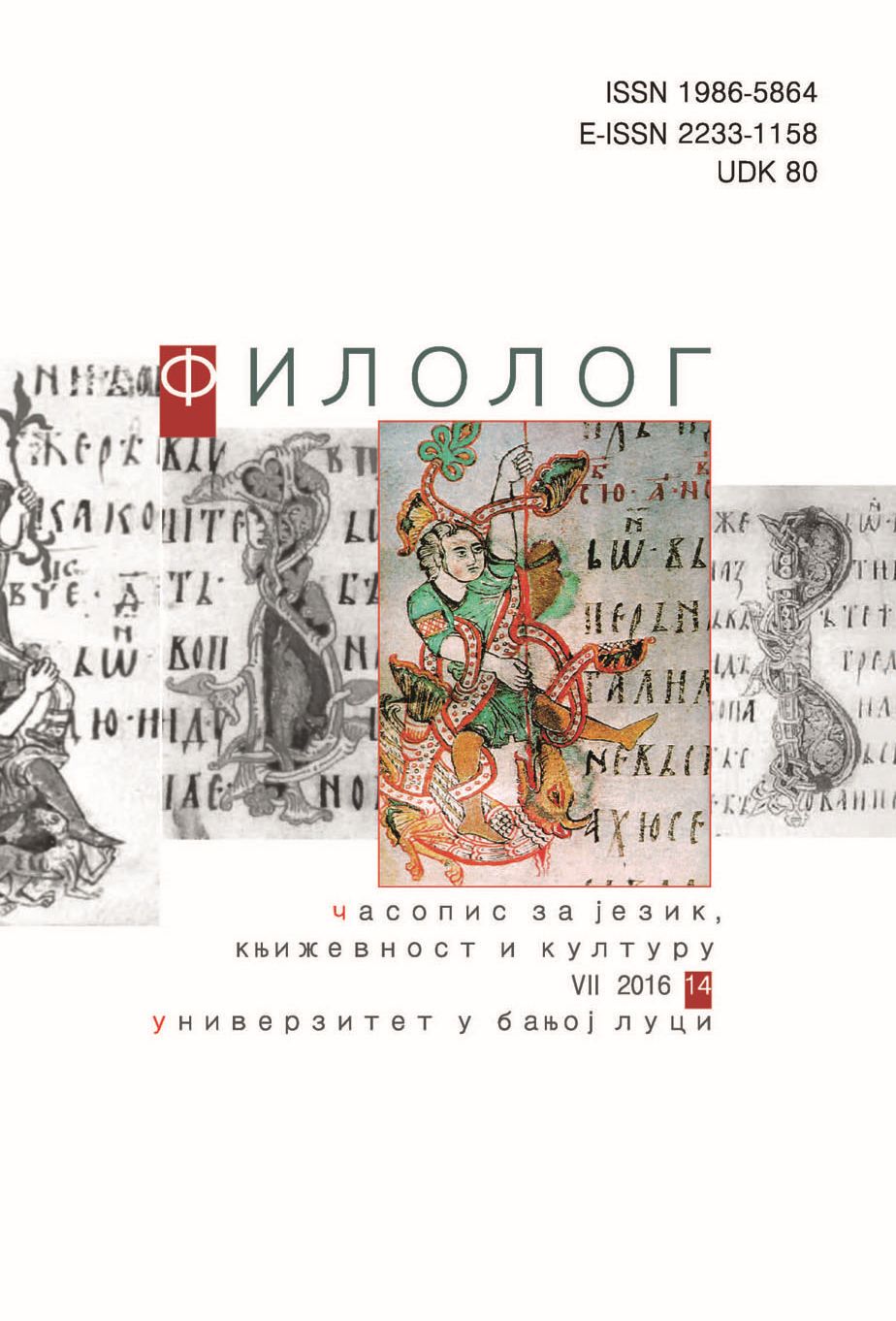
Стари Дубровник осветљен новим историзмом
Review of: Topličanin, Tamara (2016), Dubrovnik Marina Držića, Beograd: Zadužbina Vladete Jerotića – Ars Libri.
More...We kindly inform you that, as long as the subject affiliation of our 300.000+ articles is in progress, you might get unsufficient or no results on your third level or second level search. In this case, please broaden your search criteria.

Review of: Topličanin, Tamara (2016), Dubrovnik Marina Držića, Beograd: Zadužbina Vladete Jerotića – Ars Libri.
More...
Cette contribution aborde les caractéristiques linguistiques et stylistiques de l’ouvrage Fala od sveti aliti govorenja od svetkovina zabiliženi priko godišta (Eloges des saints ou bien discours de fête notés au long de l’année) de Stipan Margitić, franciscain de Jajce, publié à Venise en 1708. L’accent est mis surtout sur les aspects syntaxiques et lexicaux de cet ouvrage, entre autre aussi parce que ses caractéristiques graphiques, phonologiques et morphologiques ont déjà été bien abordées par Slavko Vukomanović dans sa monographie Jezik Stipana Markovca Margitića (La langue de Stipan Markovac Margitić, Belgrade 1971). Là se trouvent analysées aussi les caractéristiques qui correspondent aux traits linguistiques et stylistiques des autres ouvrages des écrivains de Bosnie-Herzégovine du XVIIe et du XVIIIe siècles, en particulier celles qui proviennent des finesses du parler de la région natale de Margitić, à savoir de Jajce, de même que les caractéristiques qui mettent en relief la beauté exceptionnelle de l’expression littéraire de Margitić et qui lui réservent une place distinguée parmi les meilleurs écrivains franciscains de Bosnie du XVIIIe siècle.
More...
This paper contains seven independent scientifi c researches and two workshops linked to a mutual literary corpus (the 18th century Franciscan chronicles and the opus of contemporary narrators), as well as the key theoretical concepts that have marked the last decades in humanities and social sciences. These include cultural memory phenomenon, different strategies on remembering and forming of the individual and collective identity. In the introduction the theoretical foundations of the research have been laid down by presenting what is it that includes intertextuality, cultural memory, memory and history, as well as presenting the 18th century Franciscan chronicles with which contemporary narrators, starting with Ivo Andric, establish intertextual connections. The second part focuses on the ways Bosnian Franciscan are shaped in the works of Ivo Andric. It is primarily based on the Franciscan chronicles and follows the strategy of creating „figures of memory“ – the friars function as the guardians of memory and time. They accumulate memories, write them down and keep them away from oblivion. It is also a method to fight the „evil“ around us. The relationship between history and fiction is investigated in the third part of the paper on the example of Andric’s Travnička hronika (The Chronicles of Travnik), a model example of subjecting the documentary material to fantasy and to the performative power of the text. The text takes a role of a keeper, but also maker, of memories – a cornerstone in shaping the identity of a community.
More...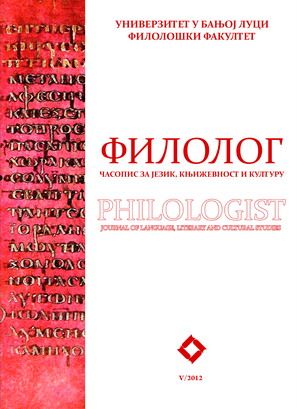
Review of: Kovač, Zvonko (2011), Međuknjiževne rasprave – Poredbena i/ili interkulturna povijest književnosti, Beograd: Službeni glasnik; Tutnjević, Staniša (2011), Razmeđa književnih tokova na Slovenskom Jugu, Beograd: Službeni glasnik.
More...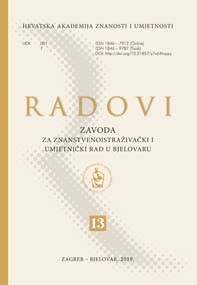
Célestin Freinet and Mato Lovrak were active as teachers more or less contemporarily in the 20th century. It may be stated that they lived and worked at the same time – between 1919 and 1960. Their activities and ideas regarding pedagogy were to a high extent similar. The following question may be posed: who or what was the cause that both of them had many ideas in common, which they practiced in working with children. Since they both lived and worked in the time of full affirmation of the projects and courses related to reform pedagogy, it may be assumed that both of them recognised the pedagogical values of the ideas arising from these projects, and successfully and creatively applied them in practice. Freinet was better known in other countries of Europe of that time, whilst Lovrak, apart from practicing these ideas in classroom, described them in a rather interesting fashion in novels tacking school life topics intended for children and teachers. Common features in their pedagogy and didactics particularly worth stressing are: pupils’ autonomy; cooperation among pupils; children’s rights; freedom of expression in various areas; freedom in writing compositions; pupils’ cooperative movement; empirical learning in a stimulating environment. They both stressed freedom as an important principle in relation to pupils’ activities. As concerns the interrelations regarding the activities of teachers and pupils, both of these well-known teachers and pedagogues agree that the best school is the one where pupils are more active than the teachers, that is to say where learning predominates over teaching. Due to the fact that – thanks to their ideas and work – they had come closer to the phenomenon today called constructivist teaching, it may be concluded that they have both contributed to the affirmation of both constructivist teaching and constructivist didactics, which even today attract the attention of teachers and pedagogues.
More...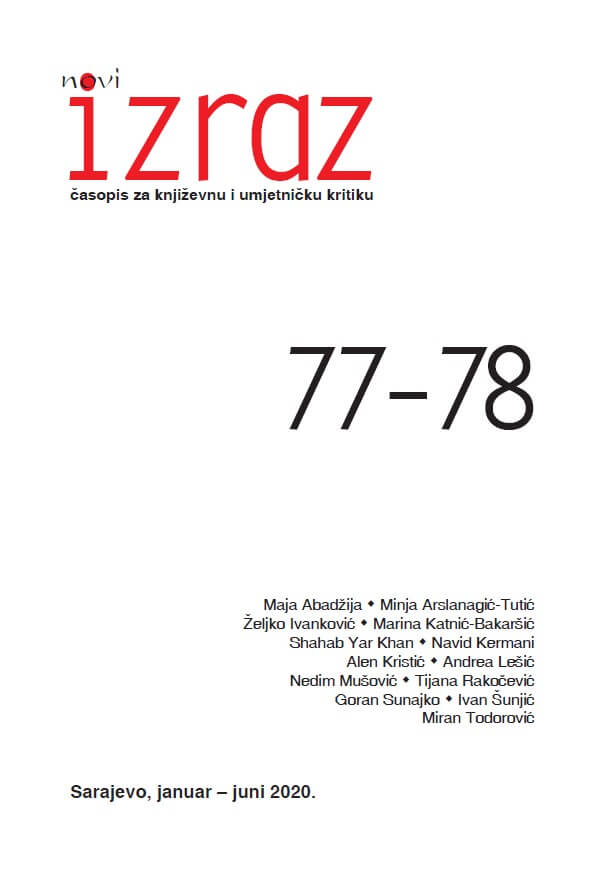
Pacifizam, iako utjecajan u određenim povijesnim razdobljima, ostaje do danas nedovoljno istražen pojam u znanstvenim istraživanjima. Iako su zadnjih godina zabilježeni određeni pomaci u pozitivnom smjeru, još uvijek izgleda kao da je veliki potencijal ove teme ostao nezapažen praktički u svim područjima humanističkih i društvenih znanosti – od povijesti, sociologije, politologije, sve do kulturoloških studija i znanosti o književnosti. Jednostavna pretraga Hrvatske znanstvene bibliografije CROSBI pokazuje tek 11 radova vezanih uz pojam pacifizma u rasponu od 1990. do 2019. godine. Neprepoznatost njene vrijednosti je jedan mogući razlog neistraženosti te teme, a drugi bi razlog mogao biti njeno svjesno zanemarivanje zbog netočne pretpostavke da u njoj nema dovoljno materijala za istraživanje. Da to nije tako pokazale su studije izašle u 2015. godini koje pokazuju bogat, neki bi rekli i nedovoljno prepoznat, antiratni i mirovni angažman u Hrvatskoj i regiji za vrijeme prije, tijekom i neposredno nakon Domovinskog rata i rata u Bosni i Hercegovini. Također je vrlo poznata činjenica da su se brojni glazbenici, umjetnici i pisci u svojim djelima i nastupima strogo protivili ratu i isticali njegove posljedice. Svejedno, znanstvena istraživanja koja bi potvrdila te prakse su rijetkost i zato vrijedi spomenuti navedene studije iz 2015. godine: riječ je o knjizi Borile smo se za vazduh Bojana Bilića i zborniku radova Opiranje zlu u uredništvu Vesne Janković i Bojana Bilića. Ti su izvori važni iz razloga što ne samo da su prvi koji specifično istražuju pacifističke prakse (u smislu da im je to primarni cilj, a ne usputni podatak) na ovim geografskim prostorima, nego i zato što predstavljaju primjer internacionalne i znanstvene suradnje među mladim znanstvenicima, od kojih većina radi i djeluje u inozemstvu, što može biti jedna od mnogo poražavajućih činjenica današnjega stanja u društvu ako je razlog iseljavanja nemogućnost mladih perspektivnih ljudi da svoje potencijale iskoriste u svojim domicilnim zemljama. Internacionalni pristup se pokazao izrazito plodonosan za područje pacifizma koje i samo po svojim principima ne dozvoljava nikakva ograničenja ni usustavljivanja po ikakvim nacionalnim ili klasnim osnovama.
More...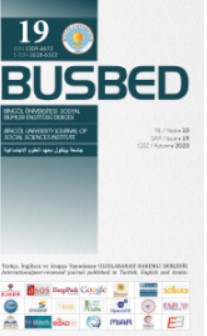
Due to its geopolitical position and ethnic diversity, the Balkans maintains its spesific position in academic studies. In addition, hosting the plot of The Bridge on Drina by which Ivo Andrić won the Nobel Prize in 1961 has been among significant factors in maintaining the Balkans’ position on agenda. The Bridge on Drina is panorama of Turkish/Muslim, Serbian/Christian, and Jewish citizens living together about four centuries around the Bridge on Drina that links Bosnia and Serbia. While the protogonist of the work is the Bridge on Drina, together with it, we witness the fate of the people living around, the influence of Ottoman Sultanate and the Austro-Hungarian Empire, both playing significant role in the change and transformation of the Balkans, and the process of confusion, resistance and adaptation stemming from the downturn of transition from feudal system to the capital one merging with the nationalist discourse of the time. There are hundreds of studies on the Bridge on Drina on international academic fields, however, the related studies in Turkey are limited and they are either on a general evaluation of on the work, or they mostly focus on tolerance and humanism of Ivo Andrić. The aim of this study is revealing that the ethnic and religious diversity in the work is narrated in a hierachy, and leaving aside his humanist ideology, the writer promotes his own ethnicity and religion while indirectly determining the position of the citizens he otherized.
More...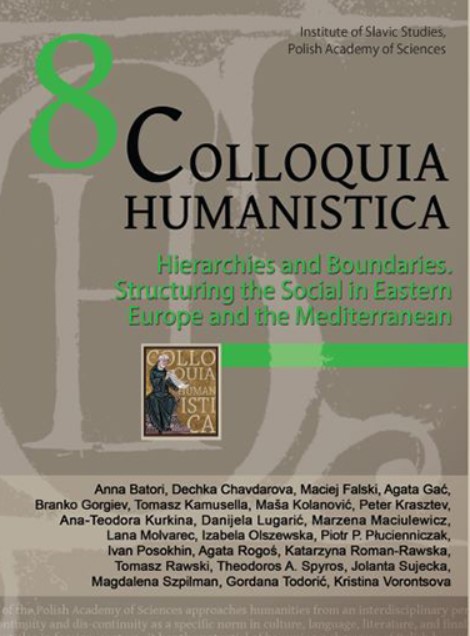
The aim of this paper is to examine the complex relational dynamics between tourism (both as a global phenomenon and a set of specific practices), space and economy in selected literary texts whose narratives are set in two different economic and political periods: socialism, and capitalism and democracy. Since these concepts cannot be easily understood through disciplinary knowledge, this paper will view the chosen literary texts as pre-disciplinary cultural products that generate specific “social knowledge” (Felski) which presents the fullness of the social world more successfully than other forms of culture or knowledge. The authors whose literary texts were included in this analysis are contemporary Croatian writers: Antun Šoljan, Zoran Ferić, Boris Dežulović and Jurica Pavičić. The first two authors wrote texts in which the relationships between tourists and locals are prevalently of symbolic and exchange value, and they mostly belong to the sphere of libidinal economy. Dežulović and Pavičić deal with contemporary tourism practices which change the identity of towns and people forever.
More...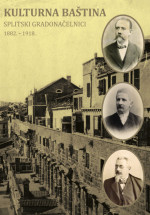
Vicko Josip, Juraj Mihaljević and Domina Dujmović’s son, was born in Split on April 5th 1861. He finished both elementary and grammar school in Split and graduated from law school in Graz. After he returned to Split in 1884, he became active in politics. In the following year, however, he was offered a secretarial post in the Split Municipality by Gajo Bulat. He resigned from this post in 1891 to apply for the bar exam and start practising law. He married Tereza Lovrić in 1898, who was the daughter of tradesman Pavle Lovrić and Ana Školjan. As a politican, he supported and eventually joined the new Party of Rights whose chairman was Ante Trumbić. Vicko Mihaljević left his mark in the Croatian literature as a poet. He published poetry under the pseudonym of Neurastenicus. He created a number of humorous and patriotic poems, that, in 1900, were published in the two collections: Na uztuk and Pregršt šušnja. V. Mihaljević was a representative in the Diet of Dalmatia. He was also a manager of a number of firms and head of the Split branch of Ljubljanska banka. He was at the helm of various associations, such as Hrvatski dom (Croatian Lodge) and Za Split (For Split). In addition, he was a board member of the so-called Hrvatski sokol and participated in board elections for association Bihać. He was a man of many hats – although a lawyer, he was interested in mining and crafts. He was appointed Mayor on 11th June 1907. He held office for four years, that is, until sudden death. Many positive changes occured in the course of his tenure. Public roads in both the central and greater area of Split were constructed; school buildings were built and for that very purpose, the Municipality either acquired or rented plots of land. The construction of the Croatian Lodge was completed in January 1908. Since its main hall was yet to be completed, a charity ball was held in the Theatre to raise funds for its construction. Finally, the hall was opened on 13th September, in the presence of many distinguished guests, such as the mayor himself, Frane Bulić, et al. He died of stroke at home, at the age of 50, on 25th June 1911. He was buried three days later at Sustipan cemetery. A renowned sculptor, Ivan Rendić, designed his tombstone – an allegorical sculpture named Meditation. The citizens of Split were shocked by the sudden death of the mayor and thus decided to arrange a majestic funeral. The article published in his honour in the newspaper Naše jedinstvo read: Dr V. Mihaljević lived for his people and his town. He is therefore mourned today and will be mourned wherever there are those who had honour to know him and wherever there are Croatians. May God bless his soul! However, in the following year, in the section Gradski vjesnik of the same newspaper, the article was published that read: It has been a year since our dear mayor, Dr Vice Mihaljević, passed away, but noone seems to remeber him anymore. His wife Tereza inherited both his assets and liabilities.
More...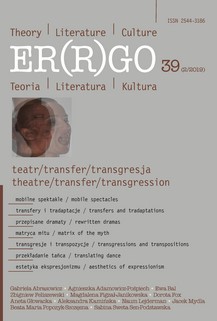
Myths evolve continuously and they are influenced by transfer; in this way they cross the boundary between ages, geocultural areas, and art genres. This dynamic system of symbols, archetypes, images, and schemes has been integrated by culture and stimulates the artistic activity of the 21st century. This also happens when it comes to the playwrights and stage producers of the post-Yugoslav countries. One should point to the extraordinary transformations of myths by Ivana Sajko (Croatia), Ljubomir Ðurković (Montenegro), and Jeton Neziraj (Kosovo). As a result of such strategies as, for example, prefiguration, transposition, and reinterpretation, ancient and modern contents overlap and create new quality. The theatrical plays which are based on such texts are other examples of transfer and transformation depending on the performative circumstances of the exposition. Moreover, these productions are transcultural and transgressive.
More...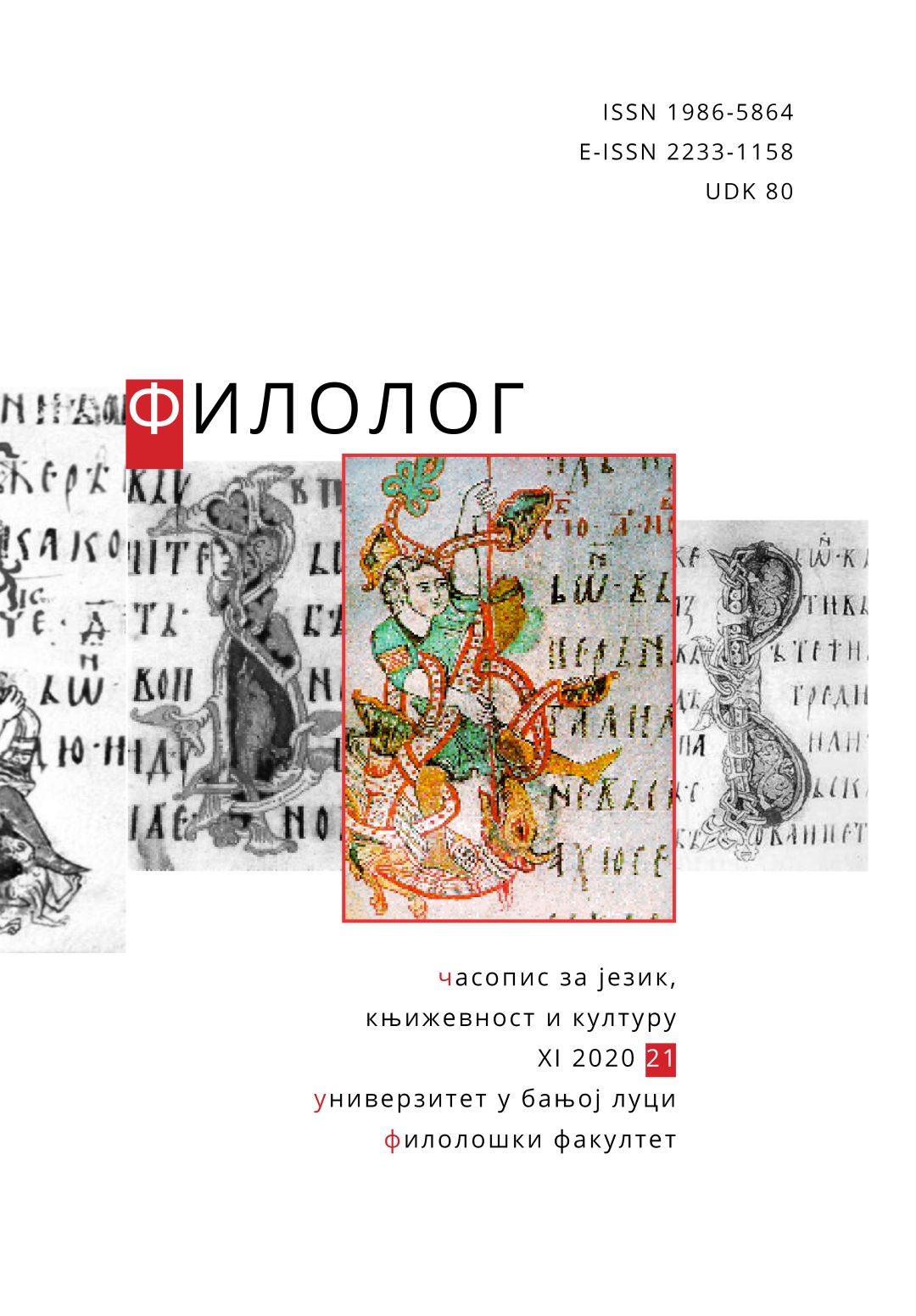
Poetry can do without the authorial aside. Yet, this is true for all literary genres. What happens, though, with poets’ critical pieces when these pieces – structured in order to highlight, in general theoretical terms, either an aesthetic phenomenon or a cluster of generic artistic features – surpass the realm of self-reflective ambitions of the poets themselves? In that case, we talk about a versatile or prolific author. The multi-directional nature of that agency, its dialectical essence, implies a possibility of autonomous existence of critical forms of expressing stances and judgments, independently of poets’ personal poetic standards. It is A. B. Šimić’s oeuvre that presents a fertile ground for discussing this complex issue of literary onto-theory: the history of reception of integral, that is, a separate study and evaluation of his poetry/ critical prose, proves in valid terms both uncertainty and arbitrariness in anti-theoretical approaches up to date to critical pieces of artists (in Serbian poetry, Šimić’s counterparts in this respect are poets Laza Kostić, Momčilo Nastasijević, and Miodrag Pavlović). This study tendency demands another segment of general discursive practice of literary critics be clarified. It is a constant conflict between principal interpretative concepts, so-called leading/major literary paradigms. With regard to this, the cognitive-logical power and aesthetic-critical integrity of the interpreter of the aforementioned relations come forward. Consequently, this is fully visible in the way A. B. Šimić’s status of critical prose changes in the Yugoslav and, in particular Croatian, literature of the 20th century.
More...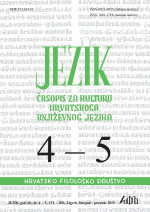
Conference-Report: Gordana Barudžija ‒ KATEHETSKA PROLJETNA ŠKOLA. RIJEČ KAO SADRŽAJ I MJESTO UČENJA I POUČAVANJA
More...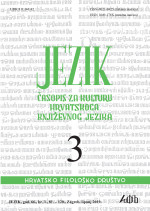
Das Enklitikon se der kroatischen Literatursprache wird als Bestandteil von Verbformen bzw. Verbsyntagmen homonym als akkusativisches Pronomen, als lexikologisches Affix bei intransitiven Verben und als Diathesemorphem verwendet. Weiterhin ist es als Diathesemorphem selbst noch einmal ein Homonym, insofern es sowohl bei bestimmten Verbformen des Aktivs als auch bei solchen des Passivs verwendet wird. Als Reflexivpronomen bedeutet das Enklitikon se polysem eine nichtreziproke und eine reziproke Reflexivität. Auf Grund dieser vielfachen Mehrdeutigkeit hängt die Eindeutigkeit der jeweiligen Verwendung von se in Verbindung mit Verbformen oft von dessen weiterem Kontext ab. In dem Artikel wird mit zahlreichen Beispielen die Verwendung von se bei Verben umfassend hinsichtlich von dessen Prosodie, sowie der Morphologie, Syntax und Semantik der mit se gebildeten Verbformen bzw. Verbsyntagmen dargestellt. In einem Exkurs wird die analoge Verwendung der enklitischen Dativform des reflexiven Personalpronomens si als Bestandteil von Verbsyntagmen sowie als adnominale Ergänzung behandelt.
More...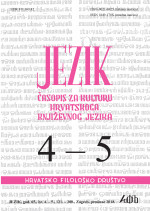
Review: Mate Maras ‒ NOVI ZAVJET U HRVATSKOM RUHU. Nada Babić, Hrvatski prijevodi Novoga zavjeta od 20. st., Kršćanska sadašnjost, Zagreb, 2018.
More...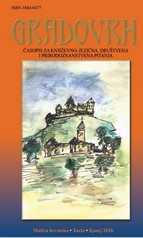
The paper will present phrasemes isolated from the novel The Woman from Sarajevo written by Ivo Andric. This paper is based on the definition of phrasemes as expressions consisting of at least two autosemantic words and at least one of them must have transposed meaning. It is going to be very interresting to analyse phrasemes imposing miss Rajka’s fi gures related to material values, especially money.
More...
Internacionalni teatarski festival MESS je osnovan u Sarajevu 1960. godine. Osnovan je pod imenom Festival malih scena Jugoslavije, a nakon 1974. godine mijenja ime u Festival malih i eksperimentalnih scena Sarajevo od čega potječe skraćenica po kojoj je festival i danas prepoznatljiv. Publika je iz godine u godinu imala priliku gledati i razvijati vlastiti teatarski ukus u kome je posebno mjesto pripadalo teatarskim inovacijama i eksperimentima uz neprekidno nastojanje da Festival postane ogledalom cjelokupne kulturne slike Bosne I Hercegovine, u čemu su uspjeli. Na festivalu MESS, za 54 godine, odigrane su 62 predstave 50 autora u 14 različitih bosanskohercegovačkih produkcija. Najviše pozorišnih predstava sadržanih u istraživanju učešća bosanskohercegovačke pozorišne produkcije na festivalu MESS sa djelima južnoslavenskih autora odigrano je u produkciji Bosanskoga narodnog pozorišta Zenica (17 predstava) te Kamernog teatra 55 (13 predstava). Od ukupno 50 južnoslavenskih autora čija su djela izvodila bosanskohercegovačka pozorišta na festivalu MESS, najveći je broj bosanskohercegovačkih autora (24 autora). Igrano je 13 predstava srpskih autora, 7 predstava hrvatskih, 3 predstave slovenskih i jedna predstava makedonskog autora. Sudjelovanje na festivalu MESS postalo je stvar prestiža mnogih generacija teatarskih umjetnika. Za ovo istraživanje od posebnog značenja je sudjelovanje bosanskohercegovačkih teatarskih kuća koji su igrali komade južnoslavenskih autora.
More...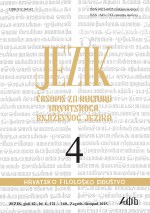
Imperfect verbs ending in -(j)avati and -(j)ivati are synonymous forms in the Croatian literary language; they are numerous and used quite often. These verbs have been systematized at the morphological and formative levels of Croatian-language literary norm. A comparison of grammar books, orthography and style manuals, and language advisors reveals both different descriptions and normative approaches to the distribution of those allomorphic suffixes; therefore, one may say that these verb forms have not been evenly, consistently and firmly systematized in the literary and language norm, which exerts an impact on the literary and language practices in terms of vacillation and inconsistencies. This paper addresses the description of verbs that add -(j)avati and -(j)ivati ‒ in the literary and language norms of the latter part of the 20th century and contemporary alike ‒ with the aim of bringing attention to possible shortcomings worthy of note.
More...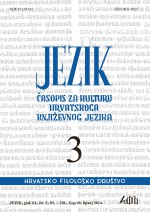
Jugoslavenska akademija pozvala je Đuru Daničića u studenom 1876. da se vrati u Zagreb radi izdavanja Rječnika hrvatskoga ili srpskoga jezika.
More...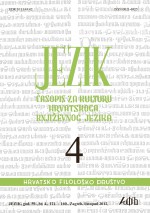
This paper is devoted to the study of the sign systems of accents in Croatian. Until the mid-19th century most Croatian grammarians and lexicographers (Bartol Kašić and others) used three signs, taken over from Ancient Greek: the acute accent (´), the grave accent (`) and the circumflex ( ̑ ). From the mid 19th century onwards a four-sign (or five-sign) system was established by Vuk Stefanović Karadžić and Đuro Daničić ( ̏, ̑, ´, `, ̄ ); this system has been used in Croatian accentology until today. However, there is also a two-sign notational system ( ', ̄ ) developed and used by Bulcsú László.
More...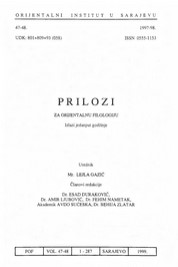
Der kroatische Schriftsteller M. A. Relković wurde in Davor (Slawonien) geboren. Als Sechzehnjahriger trat er in den Militardienst in einem am Fluss Sava stationierten Grenzregiment ein. Da er sich durch Tapferkeit besonders hervorgetan hat, wurde er im Jahre 1778 zum Kapitân befördert. Als Offizier nahm er am Osterreichisch-Preussischen Krieg (1756-1773) teil, in dem er mehrmals verwundet wurde. Mit 54 Jahren tritt er in den Ruhestand und zieht nach Vinkovci, wo er stirbt und beerdigt wird.
More...